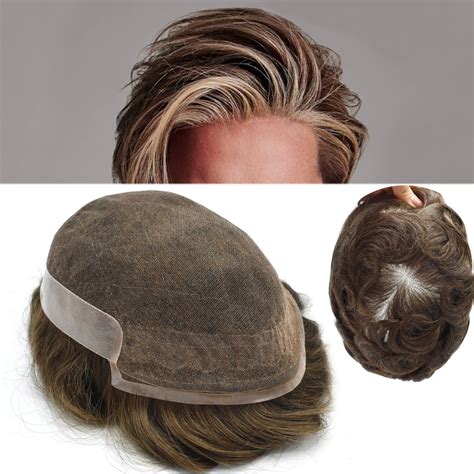Toupee system pins are an essential component for securing your hair replacement system and ensuring a natural, comfortable fit. With so many options available, choosing the right pins can be overwhelming. This comprehensive guide will provide you with everything you need to know about toupee system pins, from types and sizes to installation and maintenance tips.

Types of Toupee System Pins
There are three primary types of toupee system pins:
-
U-Pins: U-shaped pins that are inserted into the base of the hair system and wrap around the hair fibers to provide secure hold.
-
Flat Pins: Thin, flat pins that are glued or sewn onto the base of the hair system and inserted into the scalp. They offer a low-profile, discreet hold.
-
Wave Pins: Wavy pins that are similar to flat pins but have a slight curve. They provide extra hold and can be used in conjunction with flat pins.
Sizes and Materials
Toupee system pins come in various sizes and materials. The most common sizes are:
- 4mm: Suitable for thin hair systems
- 5mm: Suitable for most medium-thickness hair systems
- 6mm: Suitable for thick hair systems
Materials used in toupee system pins include:
- Steel: Durable and strong
- Stainless steel: Hypoallergenic and rust-resistant
- Titanium: Lightweight and biocompatible
Choosing the Right Pins
The type and size of pins you choose will depend on the thickness, density, and base material of your hair system. Consider the following factors:
- Hair system thickness: Thicker hair systems require larger pins for better hold.
- Hair system density: Denser hair systems require more pins to secure the system evenly.
- Base material: Different base materials (e.g., lace, polyurethane) may require specific types of pins for optimal adhesion.
How to Install Toupee System Pins
Installing toupee system pins is a simple yet critical procedure to ensure a secure fit:
- Identify the insertion points: Determine the areas of your scalp where the hair system needs the most support.
- Create small holes: Use a small needle or pin to create tiny holes in the base of the hair system, at the identified insertion points.
- Insert the pins: Insert the chosen pins into the holes and gently push them down until they are flush with the base of the hair system.
- Secure the hair system: Place the hair system on your scalp and gently press down to distribute the pressure evenly.
Maintenance and Removal
To maintain the effectiveness of your toupee system pins and extend their lifespan, follow these tips:
- Clean regularly: Use a damp cloth to wipe down the pins and remove any hair or debris.
- Inspect regularly: Check the pins for any signs of damage or wear, such as bends or rust.
- Replace damaged pins: If any pins become damaged, replace them immediately to maintain the integrity of the hold.
- Remove safely: To remove the pins, gently lift and slide them out of the base of the hair system. Use a pin remover if necessary.
Common Mistakes to Avoid
- Using the wrong size pins: Pins that are too small may not provide sufficient hold, while pins that are too large may damage the base of the hair system.
- Inserting pins incorrectly: Inserting pins at an angle or too deeply can weaken the hold or damage the pins.
- Overtightening the pins: Excessive tightening can break the pins or cause discomfort.
- Using too few pins: Using an insufficient number of pins can compromise the security of the hair system.
Frequently Asked Questions
1. How many pins do I need for my hair system?
The number of pins required will vary depending on the size and density of your hair system. As a general guideline, use 3-5 pins for a perimeter hold and an additional pin for every 1 square inch of surface area.
2. How often should I replace my toupee system pins?
Replace the pins whenever you notice signs of damage or wear. With proper care and maintenance, pins can last for several months.
3. Can I reuse toupee system pins?
While it is possible to reuse pins, it is not advisable. Reusing pins may introduce bacteria or debris that can compromise the hold and hygiene of the hair system.
4. How can I remove my toupee system pins without damaging my hair system?
Gently lift and slide the pins out of the base of the hair system. Use a pin remover if necessary. Avoid pulling or yanking the pins, as this can damage the base material.
5. Where can I purchase toupee system pins?
Toupee system pins are available at hair replacement salons, online retailers, and beauty supply stores.
6. What is “pinning fatigue”?
Pinning fatigue refers to the loss of holding power in toupee system pins over time due to repeated insertion and removal. To minimize pinning fatigue, use high-quality pins and avoid overtightening them.
7. What is the latest innovation in toupee system pins?
One of the latest innovations in toupee system pins is the development of “self-locking pins.” These pins feature a unique design that automatically locks into place once inserted, providing a secure and long-lasting hold.
8. How can I keep my toupee system pins from rusting?
To prevent rust, choose stainless steel or titanium pins. You can also apply a small amount of anti-rust lubricant to the pins before installation.
Conclusion
Toupee system pins are an essential component for achieving a natural, comfortable, and secure fit for your hair replacement system. By understanding the different types, sizes, and materials available, and following the installation and maintenance guidelines, you can ensure that your hair system remains securely in place for optimal results.
